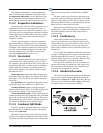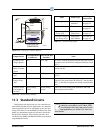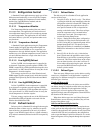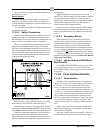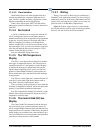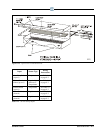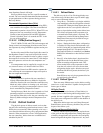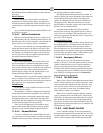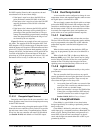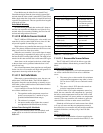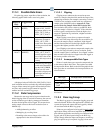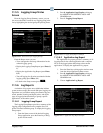
11-12 • E2 RX/BX/CX I&O Manual 026-1614 Rev 4 5-JAN-2013
time, Superheat Control will begin.
Recovery Mode always lasts for a specific number of
seconds. The case controller determines the duration based
on past performance of the evaporator during previous
Recovery Modes.
Thermostatic Expansion Valves (TXVs)
As an alternative to regulating superheat using EEVs,
case controllers also support cases that use mechanical
thermostatic expansion valves (TXVs). When TXVs are
being used, the case controllers use only Temperature
Control to turn refrigeration ON and OFF. Superheat
Control is disabled, since it is assumed the TXV is tak
-
ing care of the superheat.
11.4.3.2 EEPRs (Suction Stepper)
The CC-100H, CS-100, and CCB (suction stepper and
lineup) control case temperature from the suction side of
the evaporator by using an EEPR to regulate suction pres
-
sure.
Suction-side control differs from liquid-side control in
that Superheat Control is not used. In liquid-side control,
the valve aperture is controlled in order to achieve a super
-
heat setpoint. In suction-side control, the CC-100 changes
the valve aperture to achieve the case temperature set
-
point.
Case temperature may be supplied by a supply air sen-
sor, return air sensor, or a mixture of the two values.
Temperature Control uses PID control to operate the
valve and keep the case temperature input value equal to
the case temperature setpoint.
Recovery Mode
Recovery Mode for suction-side case controllers is
slightly different than Recovery Mode for liquid-side
controllers. Suction-side case controllers enter Recovery
Mode only after a defrost or cleaning cycle, and it does
so in order to bring the case temperature down to a level
that is controllable by Temperature Control.
During Recovery Mode, the valve is opened to a fixed
percentage until the case temperature falls below the
case setpoint. When this occurs, the case controller exits
Recovery Mode and begins normal Temperature Con
-
trol.
11.4.4 Defrost Control
The physical aspects of defrost control, such as shut-
ting off valves and turning on defrost heat sources, is han-
dled by the case controller. When operating on its own, a
case controller initiates defrost cycles at programmed time
intervals. When connected to a Case Circuit application,
the case controllers’ defrost times are coordinated and
scheduled by the E2.
11.4.4.1 Defrost States
The defrost cycle for a Case Circuit application con-
sists of three steps. Of these three, steps #1 and #3 apply
only to cases with heated defrosts:
1. Pump Down - The defrost cycle begins with this
step immediately after the refrigeration solenoid
is turned OFF. During the Pump Down phase, the
application waits for a user-specific amount of
time to elapse before turning on the defrost heat.
This allows refrigerant in the evaporator to be
evacuated before defrost heat is activated. The
compressor(s) remain ON during Pump Down.
Pump Down times may only be used for hot gas
and electric type defrosts.
2. Defrost - During the defrost phase, refrigeration
is disabled. If using electric defrost heaters will
be ON. If using hot gas, heated refrigerant will be
pumped through the coil. This phase will con
-
tinue until the defrost is terminated (see Section
11.3.2.3 for information on how defrost is termi-
nated).
3. Run-Off - After defrost heat is deactivated, the
application waits for the Run-Off time to pass
before re-entering refrigeration mode. This
allows melted frost on the evaporator to drain
from the coil so that it will not re-freeze when
refrigeration begins again. After the user-speci
-
fied Run-Off time has passed, the defrost cycle
has ended.
Run-Off times may only be programmed for hot
gas and electric type defrosts.
11.4.4.2 Defrost Types
There are many different ways used to defrost a refrig-
erated case. A case controller is capable of using three dif-
ferent types of defrost.
Off Cycle (Timed)
Off Cycle defrost (also known as Timed defrost) is
simply a period of time during which refrigeration is sus
-
pended. No heat is applied to the evaporator. The applica-
tion simply turns refrigerant flow OFF for the duration of
the defrost cycle.
When these defrost types are used, Pump Down and
Run-Off times are not necessary; therefore, they will not
be part of the defrost cycle.
Hot Gas and Reversed Cycle Hot Gas
Hot Gas and Reversed Cycle Hot Gas require the use
of hot gas from the refrigeration lines. During these types
of defrost, the application will open the valve and pump
heated refrigerant through the evaporator coil. Any user-



